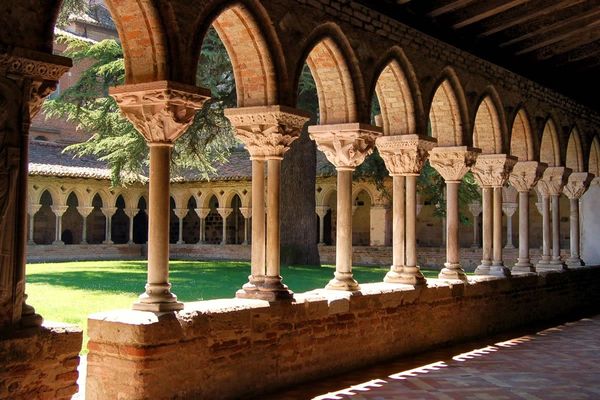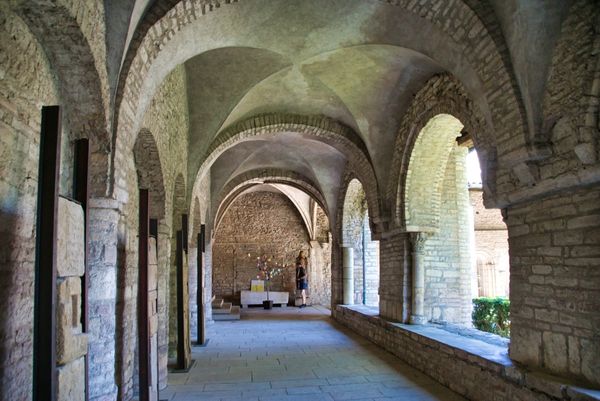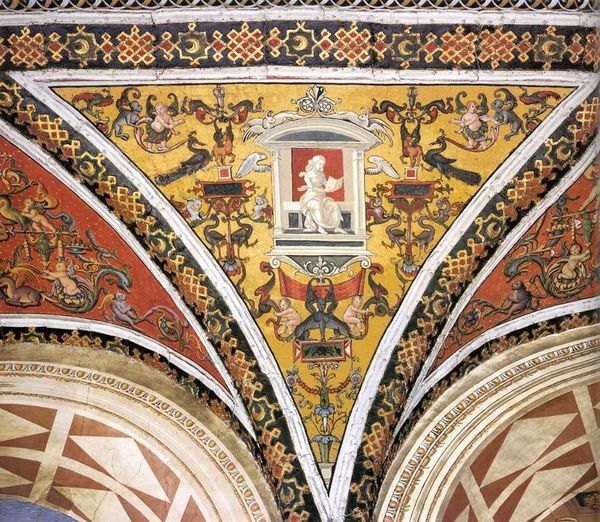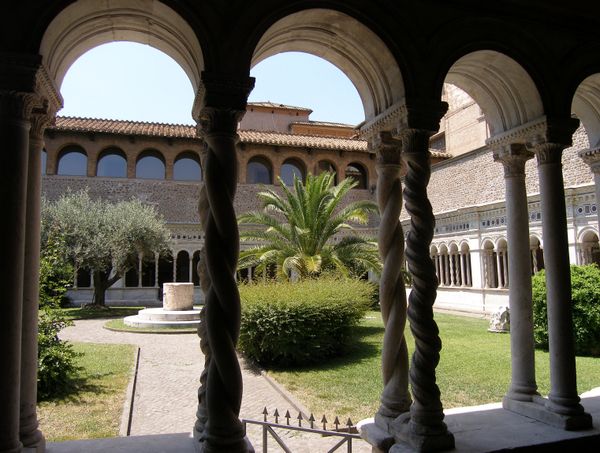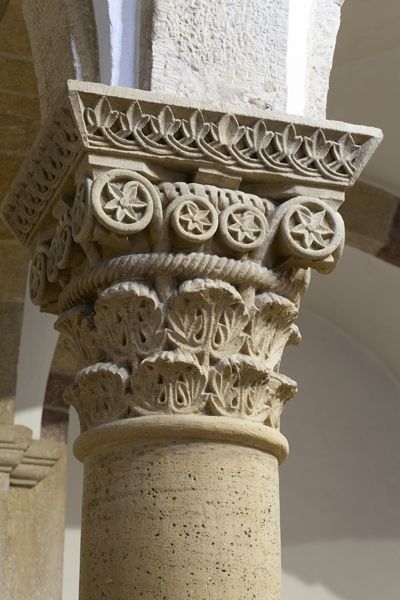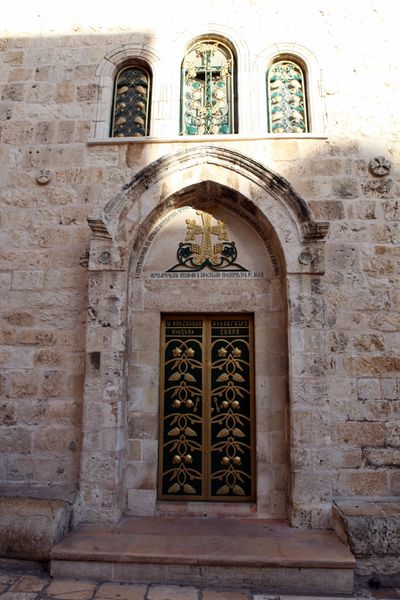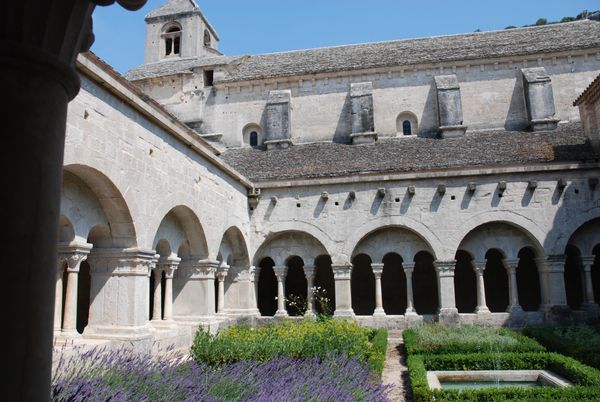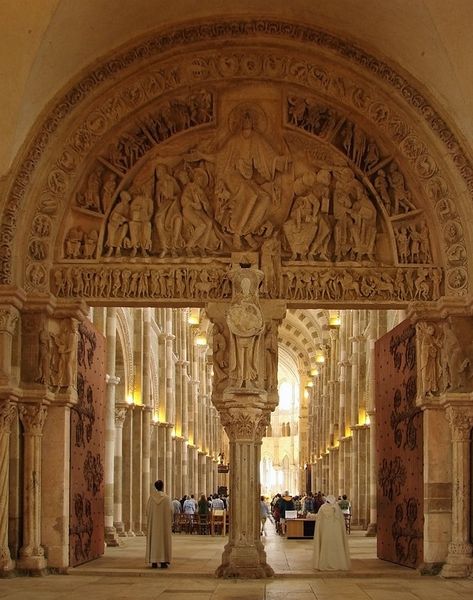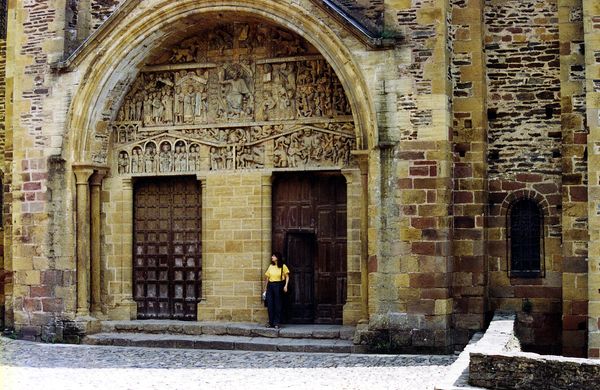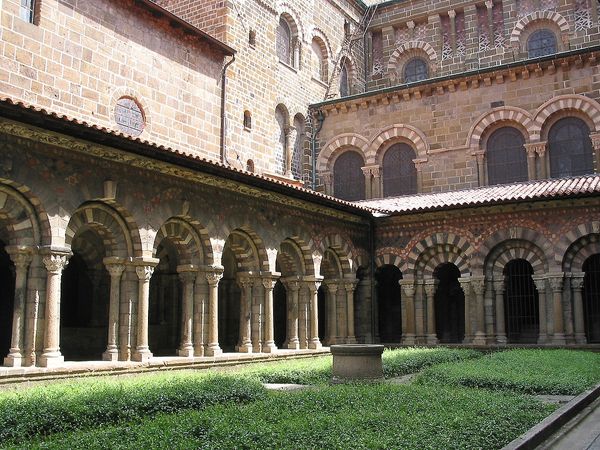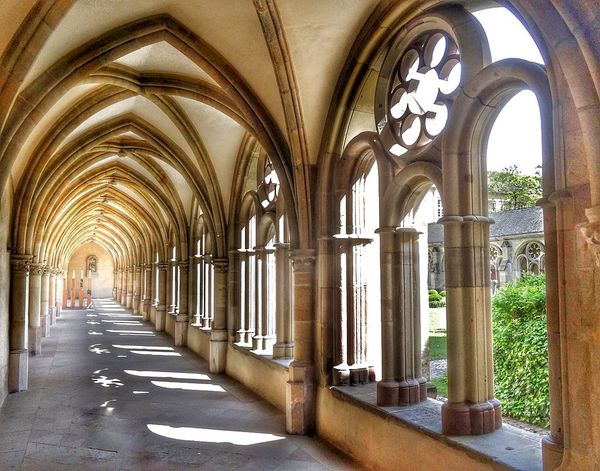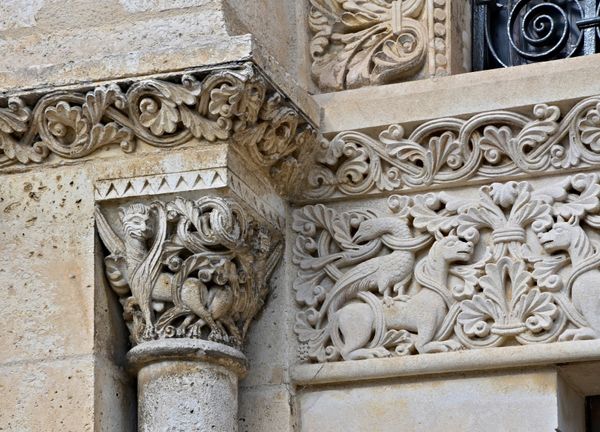
mosaic, glass, architecture
#
mosaic
#
medieval
#
historic architecture
#
traditional architecture
#
glass
#
romanesque
#
geometric
#
history-painting
#
architecture
#
historical building
Copyright: Public domain
This section of the Basilica di San Giovanni in Laterano, Rome, was made in the Romanesque period, around the twelfth century, using stone and mosaic techniques. The overall appearance is heavily influenced by the characteristics of the marble stone: its inherent qualities of solidity, weight, and color. Notice how the artisans have used the stone to create a play of light and shadow, with the repeating arches and columns providing a sense of rhythm and depth. The mosaics, with their vibrant colors and intricate patterns, add another layer of visual interest. These mosaics were made using small pieces of colored glass, stone, or other materials, carefully arranged to create a decorative effect. Consider the tremendous labor involved in quarrying, transporting, carving, and assembling these architectural components. The Basilica di San Giovanni in Laterano is a testament to human effort and skill. This artistic style represents a culmination of different traditions, including those of the medieval stonemasons, mosaicists, and other skilled workers. It challenges traditional distinctions between fine art and craft. The repetitive nature of the architecture embodies the period's social context, representing not only a place of worship but also a display of wealth and power.
Comments
No comments
Be the first to comment and join the conversation on the ultimate creative platform.
